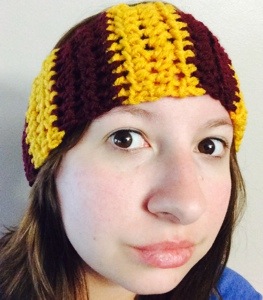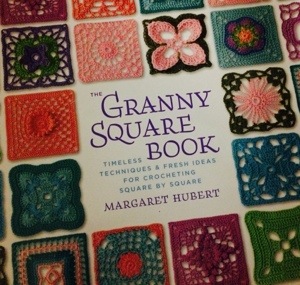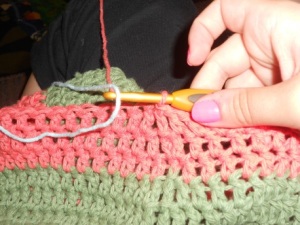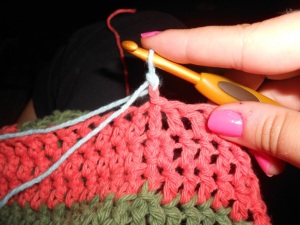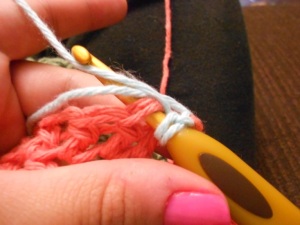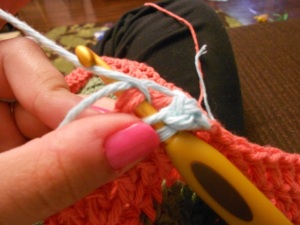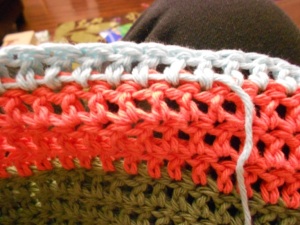I frequently get requests to make various things for people and right now I am working on making hats for the people in my Dad’s office. Something I know is an issue with crochet, especially hats, is that it leaves holes. This is just produced normally by the technique of crochet and these holes unfortunately allow for air to pass through and doesn’t always keep the noggin completely warm. The remedy that I came up with for this is to make a hat holding two strands of worsted weight yarn together. Doing so seems to allow the yarn to disperse a little better and keeps the old noodle warmer. I am making a hat using this technique to make the hats for Dad’s co-workers. I’m sharing this pattern so that others can also keep their head warm. The yarn I used for my hat is Red Heart With Love in Peacock and Caron Simply Soft Grey Heather. I usually don’t use Red Heart yarn because it is just so rough and I don’t like to use any yarn I can’t cuddle with, but Red Heart has been producing some very nice value yarns as of late. The With Love line is very reasonably priced and is very soft and cozy. I will definitely be using more of their yarns in the future. I normally go for Hobby Lobby’s I Love This Yarn when I want to use acrylic but I actually think Red Heart’s With Love is softer. I would definitely recommend giving it a try. Also, Caron is always a good acrylic choice. It is a bit on the thinner side of worsted but it is also soft and cuddly and they have tons of colors to choose from.
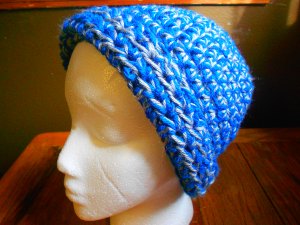
Double Yarn Hat
Items needed:
Two skeins of worsted weight yarn (either the same color or two different colors) or one skein of bulky weight yarn
Size J crochet hook
Scissors
Yarn needle
Stitch Marker
Pattern:
Start with a magic circle.
Row 1: 5 hdc into the magic ring making sure to put the stitch marker into the first stitch of the row and move to first stitch of each row. Pull magic ring closed. Do not join. (5 sts)
Row 2: 2 hdc into each stitch around. (10 sts)
Row 3: hdc in next stitch, 2 hdc into next stitch. Repeat around. (15 sts)
Row 4: hdc in the next 2 stitches, 2 hdc into next stitch. Repeat around. (20 sts)
Row 5: hdc in the next 3 stitches, 2 hdc into next stitch. Repeat around (25 sts)
Row 6: hdc in the next 4 stitches, 2 hdc into next stitch. Repeat around (31 sts)
Row 7: hdc in the next 5 stitches, 2 hdc into next stitch. Repeat around (35 sts)
Row 8: hdc in the next 6 stitches, 2 hdc into next stitch. Repeat around (39)
Row 9: hdc in the next 12 stitches, 2 hdc into next stitch, hdc in the next 12 stiches, 2 hdc into next stitch, hdc in next 13 stitches, 2 hdc into last stitch. (43 sts)
Row 12-19: hdc in each stitch around.
Row 20: sc in each stitch around.
Row 21: sl st in the next 3 stitches and finish off. Weave in ends.
Feel free to produce and sell this hat but if you post this pattern anywhere please reference back to me!
